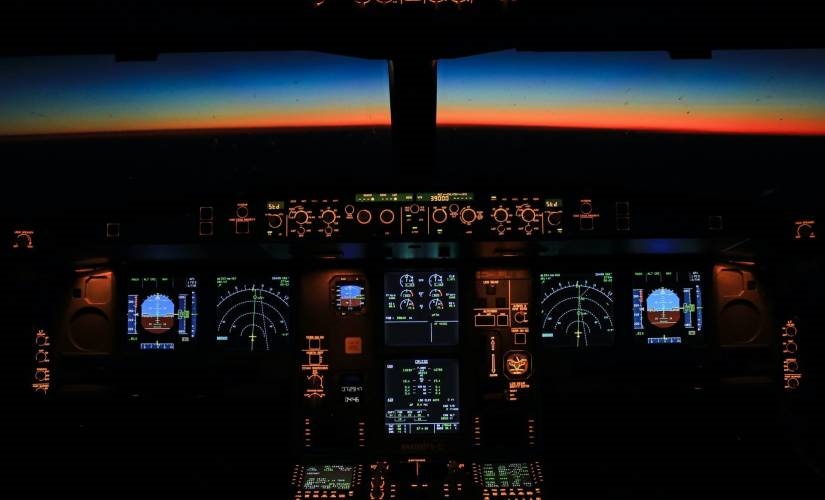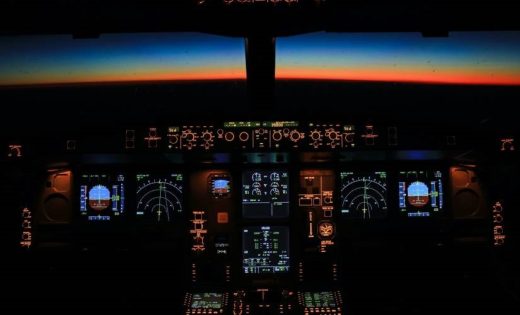Airbus’ Autopilot Technology Is So Safe, You’ll Never Want to Fly Without It
Airbus’ Autopilot Technology Is So Safe, You’ll Never Want to Fly Without It

After 50 years of progress, the aviation industry is now safer and more efficient than ever before, thanks in large part to Airbus’ pioneering work in this area. The advancement of autopilot systems in recent years is among the most noteworthy developments because of the way they have changed the nature of the pilot’s job. Airbus has invested heavily in R&D in this area with the goal of increasing the autonomy of their aircraft. In this piece, we’ll take a look at the state of autopilot technology today, with a special emphasis on Airbus’s innovative Project Dragonfly.
The Airbus campus in Toulouse is massive, accommodating 28,000 employees and thousands of curious onlookers each year. Airbus conducts a lot of its R&D there as well, including on their Project Dragonfly. Enhanced automatic landing, taxi assistance, and automatic emergency diversion were the primary goals of this experiment.
Project Dragonfly’s dramatic breakthrough was the creation of an automatic emergency descent system. If the pilots need to concentrate on complex tasks or become incapacitated, this technology will take over. The plane can descend and land while identifying other planes, weather, and terrain under its command. The system also enables the plane to communicate with ground control via radio using a synthetic voice generated by AI. The plane has to figure out everything on its own, like tuning in to airport messages from ATC and picking the best alternative landing spot. Two emergency descents were completed by Project Dragonfly, and the aircraft safely landed in France thanks to the understanding of French air traffic controllers.
The use of various sensors to aid in an autonomous landing was also investigated in Project Dragonfly. Conventional cameras, infrared cameras, and radar were all incorporated into this system. In order to model a wide range of climates, the team gathered data from all over the world. With the additional sensors, the pilot can keep a closer eye on the landing. The closer you get to an object, the more heat an infrared sensor can detect, making infrared cameras useful even in cloudy conditions. The pilot maintains command of the plane at all times during the landing process, but technological aids such as audible alerts provide guidance on speed and direction. This technology is meant to reassure the pilot that they are headed in the right direction and will arrive safely at the runway.
Especially at the busiest airports in the world, taxi driving can be the most difficult part of the job. The pilot retains command of the aircraft at all times, while the crew receives audible warnings from the technology. The aircraft will sound an alarm and provide speed guidance as it approaches obstacles. In addition to reducing the pilot’s workload, this feature guides passengers to the runway as the plane taxis.
Some may wonder if, in the future, passenger planes will need pilots at all, given the advent of such sophisticated autopilot technologies. Airbus is quick to note, however, that additional automation will be implemented only when safety permits, and that the goal is not to do away with pilots altogether. Only if it was absolutely certain that doing so would ensure the safety of both passengers and crew members would fully automated aircraft be implemented. The likelihood of being involved in an air accident is extremely low, but the pilot’s ability to keep everyone on board safe is still paramount.
Autopilot systems have advanced technologically, but not all pilots are happy with the idea of a computer deciding whether or not a flight lands safely. Two well-rested and trained pilots can make better decisions than any piece of automation on the flight deck. Tony Lucas, president of the Australian and International Pilots Association, cited the two fatal crashes of the Boeing 737 Max in 2018 and 2019 as an example of the dangers of relying too heavily on automated systems. However, Airbus is committed to guaranteeing the safe and reliable introduction of new technologies, and pilots will always be at the center of every flight.
First reported on BBC
Frequently Asked Questions
Q: What is Airbus’ Project Dragonfly?
A: Project Dragonfly is an initiative by Airbus to enhance the autonomy of their aircraft through the development of advanced autopilot technologies. The project focuses on features such as automatic emergency descent, sensor integration for autonomous landing, and taxi assistance.
Q: What is the main breakthrough of Project Dragonfly?
A: The main breakthrough of Project Dragonfly is the development of an automatic emergency descent system. This technology allows the aircraft to safely descend and land in case the pilots are unable to perform these tasks. The system also enables the aircraft to communicate with ground control via radio using a synthetic voice generated by AI.
Q: What sensors are used in the autonomous landing system of Project Dragonfly?
A: Project Dragonfly incorporates conventional cameras, infrared cameras, and radar to aid in autonomous landing. These sensors provide data on the surrounding environment and help the pilot maintain situational awareness during the landing process.
Q: How does the taxi assistance feature of Project Dragonfly work?
A: The taxi assistance feature of Project Dragonfly assists pilots during taxiing by providing audible warnings and speed guidance when approaching obstacles. It helps reduce the pilot’s workload and guides passengers to the runway during taxiing.
Q: Will pilots be replaced by fully automated aircraft in the future?
A: Airbus emphasizes that additional automation will only be implemented if it ensures safety. The goal is not to eliminate pilots but to enhance safety and efficiency. Pilots will continue to play a vital role in flight operations, prioritizing the well-being of passengers and crew members.
Q: What is Airbus’ stance on fully automated aircraft and the role of pilots?
A: Airbus emphasizes that additional automation will only be implemented when it is safe to do so. The goal is not to replace pilots entirely but to enhance safety and efficiency. Pilots will remain at the center of every flight, ensuring the safety of passengers and crew members.
Featured Image Credit: Unsplash
The post Airbus’ Autopilot Technology Is So Safe, You’ll Never Want to Fly Without It appeared first on ReadWrite.
(6)


